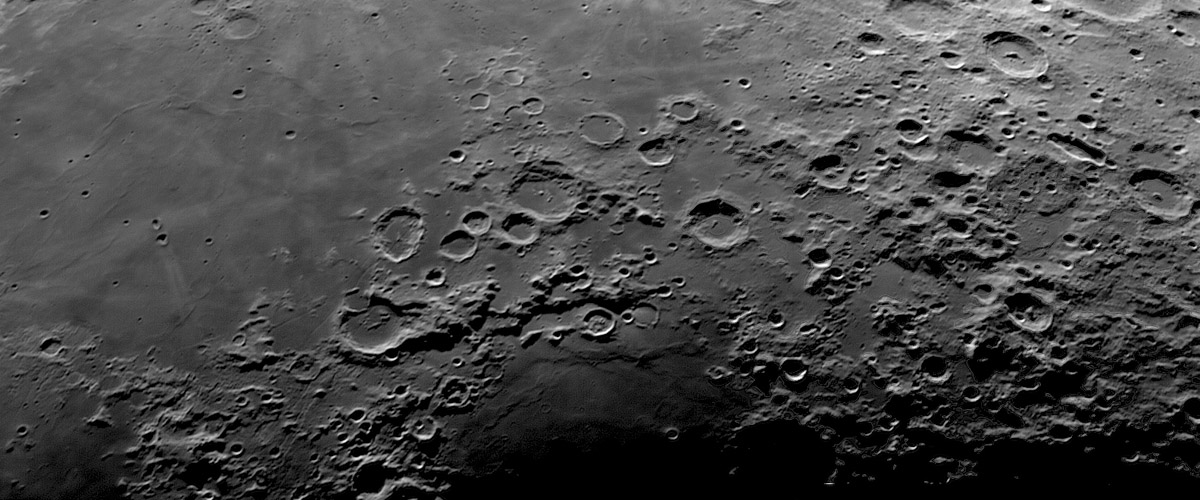
image by Dmitry Makolkin, Moscow, Russia
Ideally, an impact basin is a complete circle of mountains surrounding a depressed interior. But some basins seem to be half missing. The Nectaris Basin has perhaps the most dramatic basin rim on the Moon (only the Apennines compare) - or rather the most dramatic 25% of a rim. The spectacular Altai Mountains rim disappears north of Catharina, and becomes much less distinct east of Fracastorius. In fact, the eastern side of the Nectaris Basin is rarely imaged, perhaps because observers think there is nothing there. But Dmitry’s fine mosaic reveals many ring segments in this low Sun view of the east side of the basin. The innermost ring of mare ridges is just visible at the bottom center, surrounded by a larger mare ring made up of more conspicuous ridges. Beyond that is the mountainous edge of the mare itself: the Pyrenees Mountains. The Pyrenees ring passes under Fracastorius and has a diameter of about 400 km. A piece of the next ring segment is visible as a mountain mass between Santbeck and Colombo. Strangly, the Gutenberg Rilles occur where this ring would be expected, but it is clearly visible on the opposite side of Mare Nectaris as a hilly region between Catharina and Polybius. The main ring of the basin is a rounded mountain range stretching between Borda and Neander. It continues under Piccolomini and becomes the Altai Scarp on the west. Notice the expanses of flat, smooth plains between Pyrenees and Borda-Neander rings. This material looks like mare lavas but is not dark; most lunar scientists would interpret it as fluidized ejecta from the formation of Imbrium or maybe Crisium basins. But they may be wrong - it could be an older, unsampled style of volcanism.
Technical Details:
23 March 2007. APO 152mm F/7, Barlow 2x, Filter + Baader Planetarium UV-IR cut + VAC-135 CMOS camera, 1280×1024 pixels, at 15fps; 256 frames of 2400, multipoint alignment in Registax, stitching in Panorama Maker, finishing in Photoshop; mosaic of four images; north to the left.
Related Links:
Rükl sheets 47, 48, 58 & 59
A wider view
Yesterday's LPOD: Cloudy Moon
Tomorrow's LPOD: A Sparkling Diamond
COMMENTS?
Register, Log in, and join in the comments.



